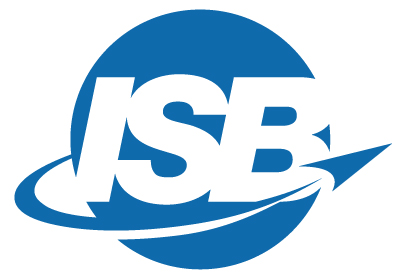A Viable Clock
Meeting Scheduling Best Practices That Finally Remove the Corporate Struggles of Back-to-Back Meetings
How Does A Viable Clock Improve Meeting Scheduling?
‘A Viable Clock’ does not allow meetings to be booked starting at the top or bottom of any hour. Meetings can only start at :05 or :35 and must end at :15, :25, :45 or :55. This gives at least ten possible minutes between meetings, but even if a meeting runs late, a buffer of time can still exist before the next call.
Here are some example meeting times:
1:05pm to 1:15pm (10min)
1:05pm to 1:25pm (20min)
1:05pm to 1:45pm (40min)
1:05pm to 1:55pm (50min)
1:05pm to 2:25pm (1hour 20min)
1:05pm to 2:55pm (1hour 50min)
‘A Viable Clock’ does not allow meetings to be booked starting at the top or bottom of any hour. Meetings can only start at :05 or :35 and must end at :15, :25, :45 or :55. This gives at least ten possible minutes between meetings, but even if a meeting runs late, a buffer of time can still exist before the next call.
Here are some example meeting times:
1:05pm to 1:15pm (10min)
1:05pm to 1:25pm (20min)
1:05pm to 1:45pm (40min)
1:05pm to 1:55pm (50min)
1:05pm to 2:25pm (1hour 20min)
1:05pm to 2:55pm (1hour 50min)

A New Meeting Scheduling Adoption for ISB Global Services
ISB is excited to announce that it has adopted the ‘A Viable Clock’. ISB is one of the first companies in the world to implement an office-wide viable clock, strategically shortening meetings to improve focus, adjusting start times while boosting productivity and morale.
‘A Viable Clock’ - A Simple Solution to Corporate Meeting Scheduling Problems
Stephen Anderson, Chief Operating Officer at ISB, created the idea and applied it first with his marketing team. The model proved to be a great success and has since been adopted company-wide at ISB Global Services.
The inspiration for the idea was born out of Anderson’s tendency to repeatedly apologize for being ‘stuck on another call’ and arriving minutes late to the next meeting. A full day of back-to-back calls didn't allow Stephen to leave his desk, grab a coffee, answer emails, or finish writing notes while the last meeting topic was still fresh in his mind.
“I wanted to eliminate people having to say ‘sorry’ for being late,” Anderson said. “It’s impossible to be in two places at the same time, and this clock allows for more flexibility, productivity, and focus.” The company has adopted the model, permanently shortening 30-minute meetings to 20 minutes, and 60-minute meetings to 50 minutes, while still leaving opportunity to hold meetings of 10 minutes and 40 minutes.
Stephen Anderson, Chief Operating Officer at ISB, created the idea and applied it first with his marketing team. The model proved to be a great success and has since been adopted company-wide at ISB Global Services.
The inspiration for the idea was born out of Anderson’s tendency to repeatedly apologize for being ‘stuck on another call’ and arriving minutes late to the next meeting. A full day of back-to-back calls didn't allow Stephen to leave his desk, grab a coffee, answer emails, or finish writing notes while the last meeting topic was still fresh in his mind.
“I wanted to eliminate people having to say ‘sorry’ for being late,” Anderson said. “It’s impossible to be in two places at the same time, and this clock allows for more flexibility, productivity, and focus.” The company has adopted the model, permanently shortening 30-minute meetings to 20 minutes, and 60-minute meetings to 50 minutes, while still leaving opportunity to hold meetings of 10 minutes and 40 minutes.
Ease Stress on Workforces with ‘A Viable Clock’ Model for Scheduling Meetings
This viable clock could prove to take pressure off workforces and ease some of the stress and anxiety of work.
Companies that have adopted remote models are desperate for extra time, even if it is just ten minutes. Those with young children, or with an already tight schedule, often don’t have time to think or eat. The extra ten minutes between meetings to gather thoughts and review notes can mean more efficiency during meetings, increased productivity while promoting general wellness among staff.
This viable clock could prove to take pressure off workforces and ease some of the stress and anxiety of work.
Companies that have adopted remote models are desperate for extra time, even if it is just ten minutes. Those with young children, or with an already tight schedule, often don’t have time to think or eat. The extra ten minutes between meetings to gather thoughts and review notes can mean more efficiency during meetings, increased productivity while promoting general wellness among staff.
A ‘Viable Clock’ Could Be the New Normal for Workforces Using Microsoft Teams, Google Hangouts or Zoom to Schedule a Meeting
Many professionals could have an entire day of back-to-back calls scheduled in their calendar, with little free time to eat, go to the bathroom, or even check in with loved ones. As is the case, some meetings can go over time, creating a full day of schedule conflicts.
This viable clock model considers all these factors, promoting a more efficient use of time.
“Gimmie five on either side! So far, it’s been a great success and relief,” Anderson said.